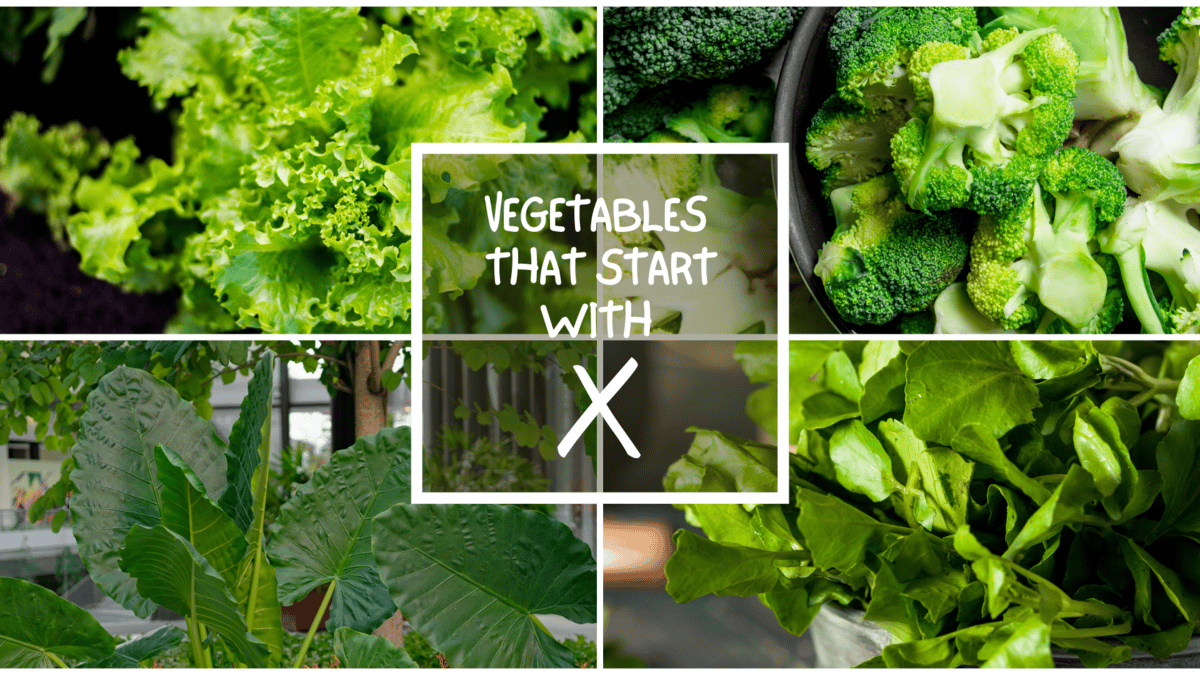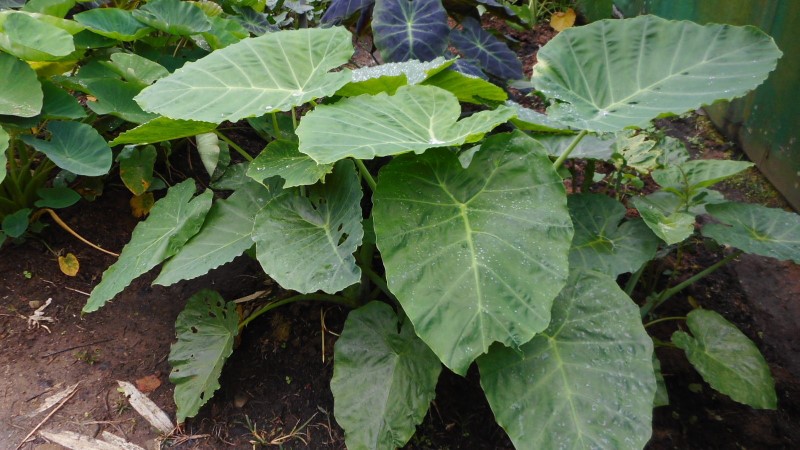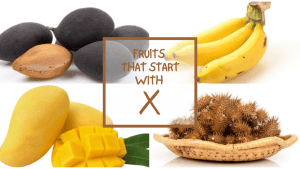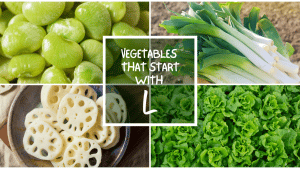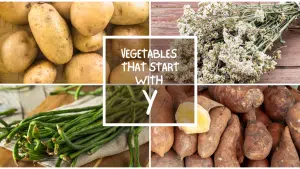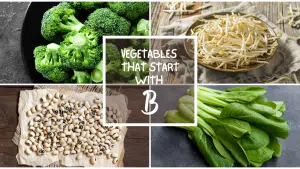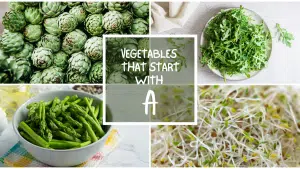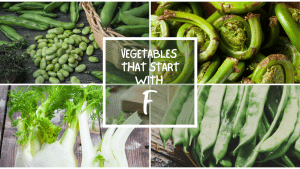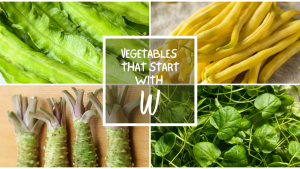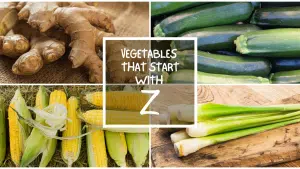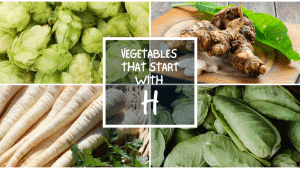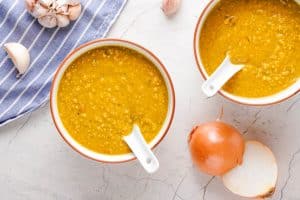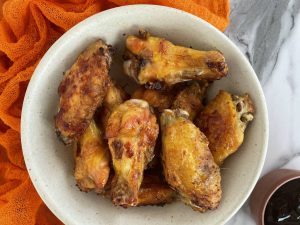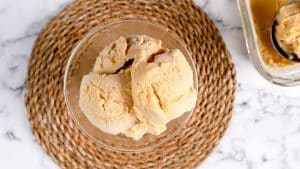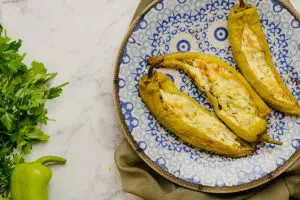All The Vegetables That Start With X
Important Note: When you buy through our links, we may earn a commission. As an Amazon Associate we earn from qualifying purchases. Content, pricing, offers and availability are subject to change at any time - more info.
Vegetables happen to be one of the richest sources of nutrients that human beings and animals need to survive. But with vegetables being so diverse is hard for you to keep track of all vegetable options available to you. To solve this problem, you can create a list of all the vegetables you know, from which you can pick the ones you prefer. To give you a head start on your list, here is a list of all vegetables that start with X.
- Xi Lan Hua
- Xi Yang Cai
- Xà Lách
- Xanthosoma Sagittifolium
- Xanthosoma Brasiliense
- Xanthosoma Caracu
- The Final Letter
Xi Lan Hua
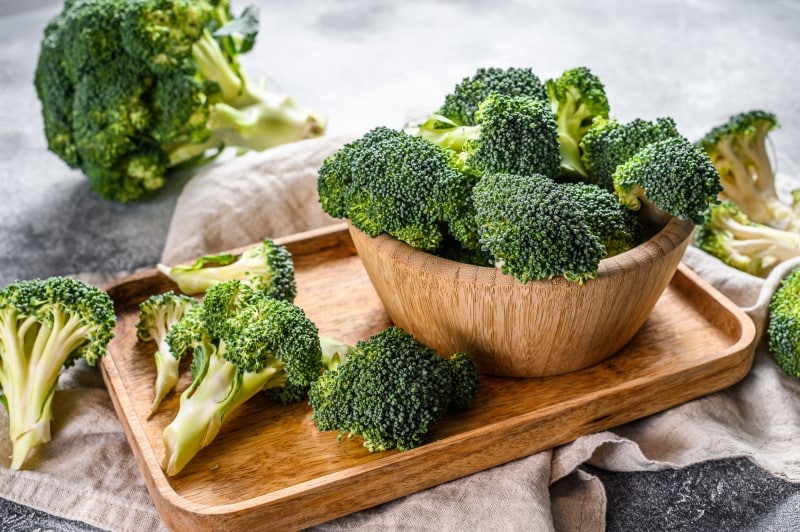
Xi lan hua is popularly known as broccoli, a green edible plant that is a member of the Brassicaceae family. Xi lan hua is identified as Brassica oleracea var. italica in the scientific community. It is believed that the vegetable is a result of the breeding of domesticated species of the Brassica crops. The origins of xi lan hua can be traced as far as the existence of the roman empire in the southern regions of the Italian peninsula to Sicily. The spread of broccoli can be attributed to the explorers who introduced the plants to the areas they intended to explore. There has been a lot of breeding done on the plant to create the perfect plant that produces excellent yields and quality at a sped-up growth rate. These experiments have resulted in various varieties of broccoli like packman, marathon, and premium crop.
There are three major types of xi lan hua. The most common species is calabrese broccoli, which is named after Calabria in Italy; it is also a cool season annual crop. The head of the Calabrese broccoli is usually about 10 – 20 centimeters and is usually green with thick stalks. Sprouting broccoli is another type of broccoli. The sprouting broccoli can either be purple or white, and it usually has thin stalks with many heads. The last major broccoli is the purple or violet cauliflower, a type of broccoli mainly cultivated in North America and Europe. It is referred to as a cauliflower because its head is shaped like a cauliflower, but in reality, it is composed of many flower buds. Also, purple cauliflower can come in various colors like white, green, or red. Xi lan hua is cultivated in almost all regions of the world, but China and India are the world’s largest producers. Also, countries like Mexico, Spain, and the United States produce a substantial amount of xi lan hua. The harvesting has to be done by hand due to its delicate nature.
The edible parts of xi lan hua include the florets, stalks, and the head. The taste and smell tend to differ depending on the type or method of preparation. When eaten raw, xi lan hua usually has a crunchy feel with a bitter sweet taste, but when cooked, it is much softer and sweeter again; this depends on the cooking method since it can also be crispy, tender, or still be crunchy. The stalks of xi lan hua have a milder flavor compared to the florets. The vegetable can be prepared by either sautéing or braising them with coking or olive oil. They can also be boiled, grilled, stir-fried or mixed in a salad. Popular dishes prepared using xi lan hua include broccoli bacon salad and grilled broccoli.
Xi lan hua is full of minerals, nutrients, and antioxidants that are very beneficial to the body. These nutritious contents include vitamins K, B9, C, and A, and minerals in xi lan hua include potassium, iron, calcium, phosphorus, and magnesium. All these nutritious contents provide various health benefits to the body. Vitamin C helps boost the body’s immune system and plays a role in treating multiple diseases. The antioxidants help in the regulation of blood sugar levels. Vitamin B9, popularly known as folate, is essential to expectant mothers since it helps develop and grow the fetal spinal cord and brain. Other health benefits of this plant include aiding in digestion, promoting healthy bones, protecting the skin from sun damage, preventing certain types of cancers, slowing down the aging process and mental degradation, and promoting better brain function. Xi lan hua is a popular vegetable and can be found in all grocery stores across the United States.
Sine xi lan hua is a source of vitamin K, and it is advised that individuals taking blood thinners should watch their xi lan hua intake. Also, ensure that before including it in your diet, you should consult with your nutritionist to avoid cases like an allergic reaction. It is important to note that when purchasing or picking xi lan hua, you should only select the firm green ones. When it comes to storage, it is recommended that you store the vegetable in a loose perforated bag to avoid moisture building up. Also, it would be best if you only washed it when you are going to immediately consume it since when stored in the presence of moisture, it may lead to the development of mold, and the vegetable may become limp.
Xi Yang Cai

Xi yang cai is known worldwide as yellowcress or watercress. The scientific name of xi yang cai is Nasturtium officinale. Xi yang cai is an aquatic flowering plant belonging to the Brassicaceae family. This is a rapidly growing perennial plant related to mustard, wasabi, garden cress, and radish. It is believed that xi yang cai is one of the oldest leaf vegetables to be consumed by human beings. The vegetable is native to Asia and Europe and spread to the other regions of the world through North America.
Xi yang cai thrives in wet or swampy like soil, though the best conditions are areas with flowing water that is slightly alkaline. It can grow submerged in water. Xi yang cai has hollow stems that allow the plant to float on water. In some areas, xi yang cai is cultivated in water tanks. The vegetable often grows to form bush colonies, with the roots being free from the stems. The leaf structure of the xi yang cai plan is pinnately compound. It produces small flowers that grow in a cluster. The flowers can either be white or green. Xi yang cai also has seed pods popularly referred to as silique, and each pod bears two rows of seeds. It is cultivated in both small scale and large scale. If left unharvested, xi yang cai can grow to a height of about 50 to 120 centimeters. Also, when it starts to flower, the leaves become bitter.
The edible parts of xi yang cai are the stems, leaves, and fruits, which can be eaten either raw or cooked. The vegetable has a peppery taste hence a perfect choice for most salads. If you choose to eat xi yang cai raw, you can add the leaves to a salad as a garnish, add them to a sandwich, or mix it with vegetables and fruits and blend them to make a green smoothie. For cooking options, you can sauté your vegetable with ginger, and a small amount of virgin olive oil, then serve it as a side dish. Xi yang cai is a popular ingredient in soup preparation, especially in the united kingdom. In Italy, the vegetable is usually chopped and added to pasta sauce as a flavor additive. Also, it can be used to make pesto or as a topping.
If you consume xi yang cai, then you are presenting your body with a bunch of essential nutrients necessary for your body’s nourishment. The nutrients include vitamins A, C, and K, minerals like calcium, magnesium, copper, iron, phosphorus, and antioxidants like zeaxanthin, beta-carotene, and lutein. These nutrients offer the body benefits like improved heart health, lowering the body’s cholesterol levels, protection against osteoporosis, boosting the immune system, promoting healthy bones, aiding in weight loss, enhancing the body’s performance, and improving eye health. Also, due to the phytochemicals present in the xi yang cai, the body is protected against certain cancers.
In the United States, xi yang cai is not very popular since it is categorized as a weed, though it can be found in supermarkets and grocery stores countrywide. There are also some notable risks that are associated with this vegetable, primarily due to the heavy presence of vitamin K, which reacts with blood thinners, thus affecting the way the blood normally clots. Also, the high nitrate content in xi yang cai can be harmful since it raises the risk of stomach cancer. To avoid bacterial contamination, remember to consume the juice or smoothie made from xi yang cai immediately or store it in a refrigerator.
Xà Lách
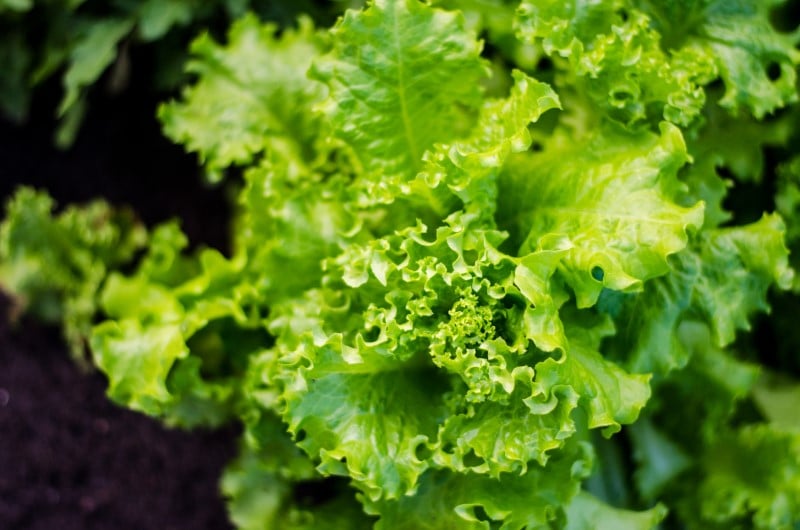
Xà lách is scientifically referred to as Lactuca sativa, and it belongs to the Asteraceae family. Xà lách is commonly known as lettuce in other regions other than Vietnam. It is believed to have originated in Egypt, where it was primarily cultivated for its seeds used for oil production. The Egyptians are thought to have selectively bred Xà lách into a plant with edible leaves. Currently, The vegetable is cultivated worldwide, with China, the United States, India, Italy, and Spain being the world’s leading producers.
Xà lách is a hardy annual vegetable plant that can grow to a height of about 15 to 30 centimeters. The leaves tend to vary in color ranging from green to red depending on the variety. Some varieties happen to have either gold or yellow leaves. The three most common types of Xà lách include leaf, romaine, and head. Other varieties include iceberg/crisphead, butterhead, celtuce, oilseed, red leaf, and summercrisp. Depending on the variety, it usually takes about 65 to 130 days to mature from the period it’s planted. The vegetables are harvested before maturity since, when they begin to flower, the edible leaves become bitter.
Xà lách can be eaten either raw or cooked. If eaten raw, it can be used as a topping or eaten in sandwiches, rice dishes, tacos, egg rolls, spring rolls, or used as Xà lách wraps. If you choose to cook it, you can sauté, grill, roast, or braise the leaves. You can also blend the Xà lách leaves to make a smoothie or vegetable juice. You can drop some fruits in the blend to improve the taste. Some simple savory recipes you can try include teriyaki beef and lettuce cups, sausage salad, garden salad, grilled lettuce and peas, Salad niçoise, and Roasted asparagus & smashed new potato salad.
Xà lách offers the body a variety of nutritious benefits like vitamin A and K and minerals like iron, zinc, calcium, manganese, sodium, phosphorus, potassium, and magnesium. The health benefits of these nutritional contents include improved sleep patterns, boosting the immune system, improved vision, clear skin, strengthening the bones, lowering the body’s cholesterol levels, and protection against osteoporosis. Xà lách also contains antioxidants that help the body fight against free radicals that cause cell damage.
Xanthosoma Sagittifolium
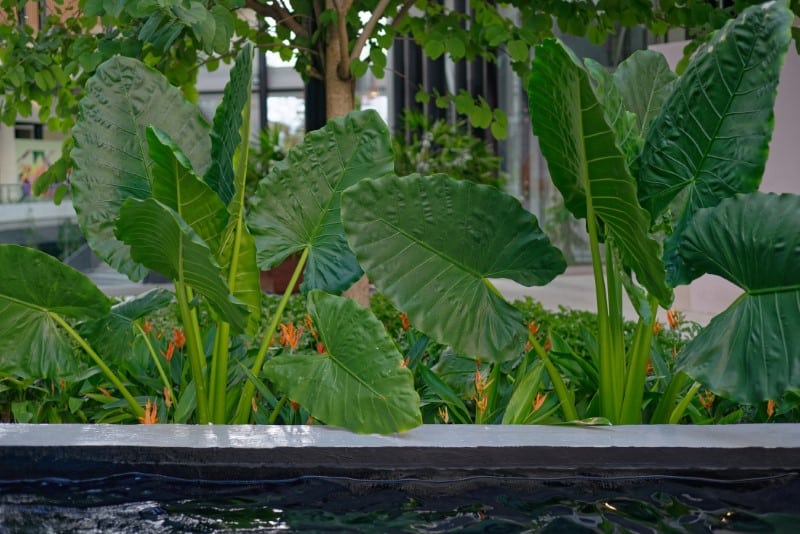
Xanthosoma sagittifolium is popularly known as arrowleaf elephant ear, American taro, Barbados nut eddoe, cocoyam, elephant ears, yannia leaf spinach, yautia, uyautia, yellow ocumo, or malanga. Xanthosoma sagittifolium is a flowering plant belonging to the Xanthosoma genus. The vegetable is mainly cultivated for its starchy and edible tubers. It is native to the northern regions of South America and Africa, from where it spread to other areas of the world. During the slavery period, the plant was regarded as slave food. Xanthosoma sagittifolium is heavily cultivated in the Pacific Islands. It is a major food source in Central and South America.
This is an herbaceous perennial plant with large leaves hence the popular name elephant ears. The leaves are predominantly light green and are usually arrow-shaped. The leaf petiole of the Xanthosoma sagittifolium is usually attached to the base of the plant. The tubers of Xanthosoma sagittifolium are generally dark brown on the outside, while the inner flesh is white. The plant can grow to a height of about 4 feet, and they mostly grow along swampy areas or stream banks.
Xanthosoma sagittifolium is mainly cultivated for its edible tubers though the leaves are also edible. The tubers are sometimes eaten raw, but most people prefer them cooked. In Dominican and Puerto Rican cuisines, the tubers are ground with potatoes, green bananas, squash, and plantains into a dough-like paste mixed with pork or ham. The mixture is then boiled and wrapped in a banana leaf or paper wrapper, after which it is ready to be eaten. The tubers are also used in soups, stews, or boiled like potatoes. Some local Dominican and Puerto Rican dishes that use the Xanthosoma sagittifolium tubers include alcapurrias, mondongo, guanime, and sanchcho. The tubers can be prepared as puree, served with shellfish, or fish cooked in coconut milk. In Suriname and the Netherlands, the tubers are shredded and baked with chicken, salted meat, spices, and fruit juices to make pom. Pom can be eaten on bread or over rice. The leaves are often baked with a chicken bouillon cube and served alongside salted beef or chicken and rice.
Xanthosoma sagittifolium is rich in minerals like copper, potassium, iron, magnesium, phosphorus, calcium, and vitamins B6, C, and A. Also, the vegetable contains antioxidants like beta carotene. The health benefits of Xanthosoma sagittifolium include lowering the cholesterol levels, regulating the blood pressure, and reducing the risks of cancer, Alzheimer’s diseases, cardiovascular problems, and vision loss. The antioxidants also help the body eliminate free radicals that damage the cells in the body.
Xanthosoma Brasiliense
Xanthosoma Brasiliense is a flowering plant belonging to the Araceae family. The most common names for Xanthosoma Brasiliense are Tahitian spinach, belembe, Tahitian taro, tannier spinach, calalou, and celery stem taro. This plant is native to the tropical regions of South America and the west indies. It was first domesticated in the amazon regions before it spread to other areas. Unlike other tannia, the tubers of the Xanthosoma Brasiliense are not edible, with only the stems and roots eaten as vegetables.
Xanthosoma Brasiliense mainly grows in areas with wet loam or clay soils, such as the river banks and river valleys. The vegetable usually succeeds when cultivated under direct sunlight or in areas with a light shade. It can grow to a height of about 2 to 6 feet. The stem is covered moderately with brown fibers that occasionally produce globose-turbinate cormels. A mature Xanthosoma Brasiliense plant consists of about 3 to 4 leaves. The leaf petioles are usually green waxy and about 45-95 centimeters long.
Xanthosoma Brasiliense is a popular delicacy in the pacific islands, South American countries, and the West Indies. The leaves and stems cannot be eaten raw, and they have to be cooked for them to be edible since they contain calcium oxalate crystals which are harmful to humans. There are various ways in which you can cook Xanthosoma Brasiliense. The leaves can be cooked similarly to spinach or added to soups, pasta, rice, and sauces. The Xanthosoma Brasiliense is also a good pairing for meats like fish, crab, pork, and poultry. The tubers are not a popular delicacy since they are usually small and underdeveloped. In some regions, the tubers are used to garnish salads, or they can be roasted, grilled, boiled, or baked. The vegetable can be added into curries, stews, and soups or baked into cheesecakes, mooncakes, and pies. The tubers can be ground into powder and used as a flavoring agent in desserts and ice creams. One of the most renowned dishes that involve Xanthosoma Brasiliense is Rodman’s Tahitian luau empanadas which are very popular in the Pacific islands.
The Xanthosoma Brasiliense contains multiple nutritional contents like vitamin C, K, B6, and A and minerals like potassium, manganese, phosphorus, calcium, iron, and copper. It is also a rich beta-carotene source and a very potent antioxidant. The health benefits of these vitamins, minerals, and antioxidants include assisting in digestion, helping to prevent certain types of cancer, inflammation, and anemia, boosting the body’s immunity and treating diabetes. Xanthosoma Brasiliense isn’t popular in the United States, thus making it hard to find it in most grocery stores though it can be found in select markets.
Xanthosoma Caracu
Xanthosoma caracu is a flowering plant that belongs to the Araceae family. Xanthosoma caracu is popularly known as caracu. It is native to the south American regions and is mainly cultivated in the west indies and central America, especially Puerto Rico. The vegetable is a perennial plant with leaves that can grow up to 2 meters long from the rootstock.
Xanthosoma caracu is mainly cultivated for its leaves and tubers that are edible. The leaves cannot be eaten raw since they contain calcium oxalate crystals which are toxic to humans. To get rid of the oxalate crystals, you have to boil or dry the leaves. The leaves are preferred as a delicacy when they are still young and are eaten like spinach or used in soups and stews. The tubers are also edible and can be cooked by either boiling, grilling, roasting, or mashed like potatoes.
This vegetable happens to be an excellent source of carbs and fiber, which makes them perfect for active individuals, athletes, and children. The fiber in Xanthosoma caracu is also responsible for stabilizing the sugar levels in the body, thus preventing the rise of insulin levels. Dietary fiber helps prevent constipation and reduces the risks of colon cancer. Also, vitamin C is present in Xanthosoma caracu, stimulating collagen production and boosting the body’s immune system. The plant also contains magnesium, potassium, iron, zinc, and phosphorus, which help prevent electrolyte imbalances, and cardiovascular diseases, improving circulation and preventing anemia.
The Final Letter
When it comes to vegetables, you can never really exhaust them all since some vegetables haven’t been discovered yet or have still not yet been thoroughly studied. Each of the vegetables above, starting with the letter X, has a distinct feature that makes it unique. So, here’s a challenge; try and discover what makes each stand out.
